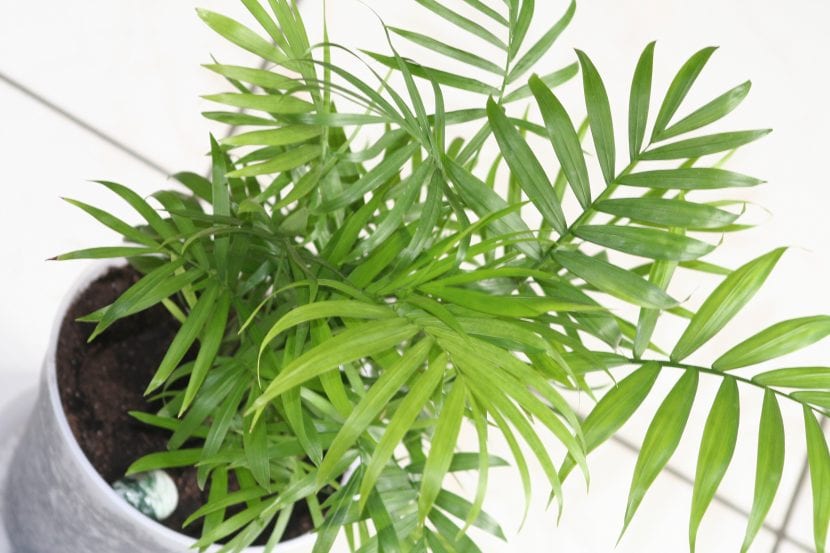
All the Chamaedorea they are palm trees of which, really, very little is known. Although it is easy to find one or two species in nurseries, when they tell you that the botanical genus is made up of more than 200 (specifically, 221) you realize how little they let you learn about them.
But yes. These palm trees are all wonderful. Easy to care for, ideal to have in any shady corner, in a pot or on the ground ... Discovering them is always a pleasure, because you know that they will always surprise you .
Origin and characteristics of the Chamaedorea
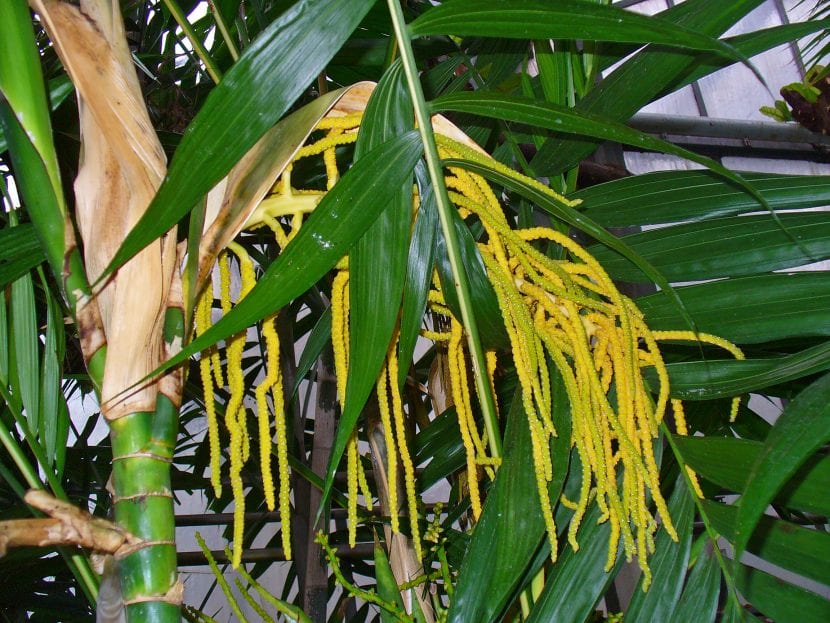
C. tepejilote
Our protagonists are plants that are only found in America, from Mexico to western Brazil and northern Bolivia. They can reach heights as diverse as 15 centimeters, as the species Minimum C., or the 15 meters and Costa Rican C.. Generally, they have a solitary trunk, with a thickness of a few centimeters and ringed, but there are exceptions, such as the C. cataractarum, which has a great tendency to take out suckers.
The leaves are pinnate (rarely whole like those of the C. metallica, with one or many leaflets. The flowers are produced in inflorescences and are usually dioecious, that is, there are male flowers and female flowers in different specimens. The fruit is an orange or red drupe measuring 0,5 to 2cm in diameter.
Species
The main species are the following:
Chamaedorea cataractarum
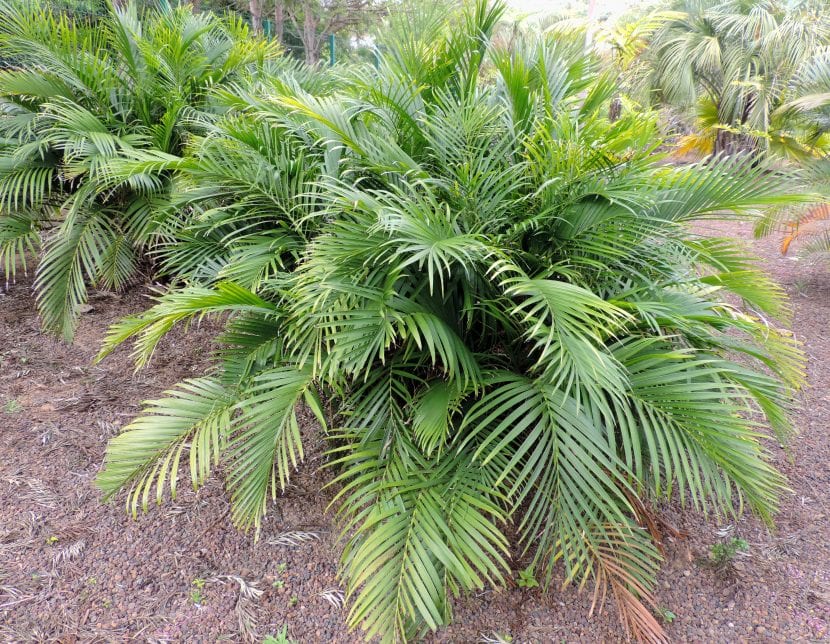
They are palm trees without trunk originating from Mexico that form dense clumps of 2 x 3 meters. Its leaves are pinnate and can measure up to 2 meters in length.
Chamaedorea elegans
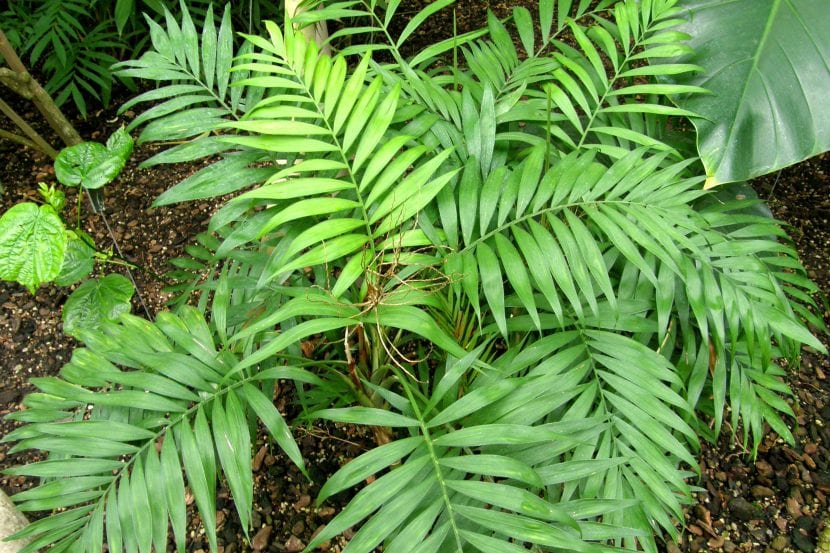
It is the most popular of all. It is known by the name of Palmera de Salón, Palma de Salón or Palmera de interior and is native to Central America. It can reach a height of 2-3 meters, and is formed by a single trunk and pinnate leaves up to 1 meter long.
Chamaedorea metallica
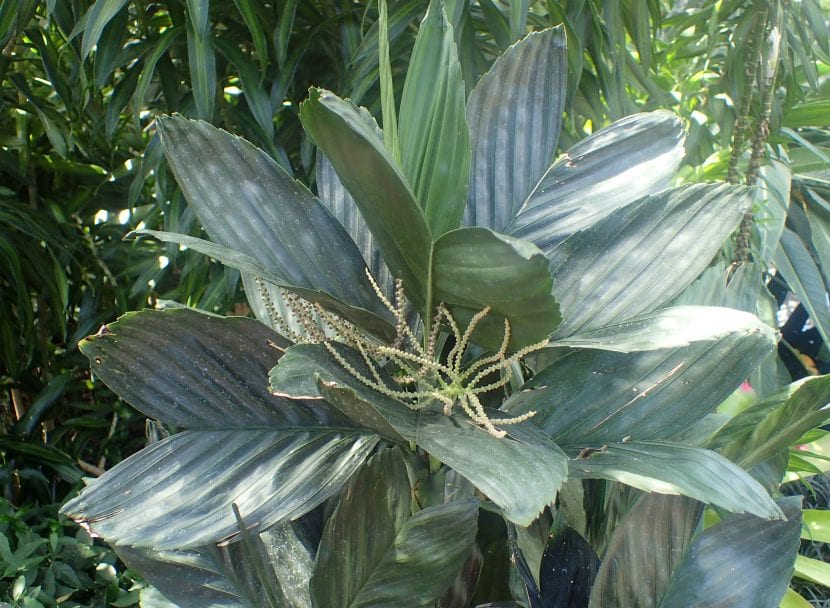
It is a palm native to Mexico, specifically from Veracruz and Oaxaca, which reaches a height of up to 3 meters. It is made up of normally bifid leaves of a precious blue-green or metallic color, which is what gives it its name, and a very thin solitary trunk no more than 3cm in diameter.
Chamaedoa Radicalis.

It is a palm native to the northeast of Mexico that reaches a height of up to 4 meters. It may or may not have a solitary trunk 2-3cm in diameter. Its leaves are pinnate and measure about 1 meter in length.
What are their cares?
If you want to get a copy, we recommend providing the following care:
Location
Body exterior:
Chamaedorea are plants that they have to be grown in semi-shade whether they are to be kept on the patio or in the garden. The direct sun burns its leaves.
Interior
Must be in a room with plenty of natural light, but a little away from the window to avoid the magnifying glass effect (that is, to prevent the sun's rays from burning the leaves when hitting the glass).
Substrate or soil
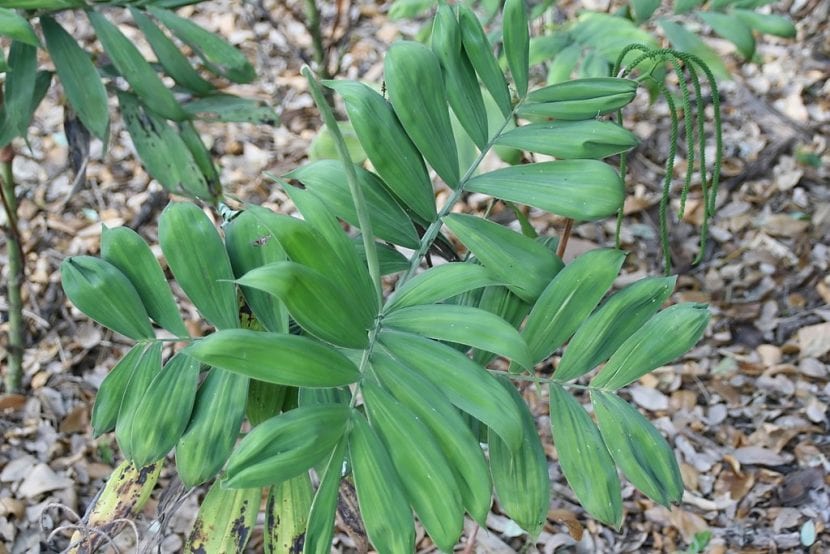
C. ascendens
Flower pot
It is highly recommended to use the following mixture: 60% black peat + 30% perlite or washed river sand + 10% earthworm humus.
Garden
The soil must be slightly chalky, with good drainage.
Irrigation
Irrigation has to be frequent in summer and somewhat less the rest of the year. As usual, it should be watered every 2 days during the hottest season and every 4-5 days the rest of the year. Waterlogging must be avoided, especially in winter, as otherwise the roots will rot. For this reason, we must also remember to remove the excess water from the dish that we have put under it ten minutes after having watered.
Subscriber
Your Chamaedorea will appreciate a regular supply of compost. As such It is highly advisable to use specific fertilizers for palm trees They are sold ready to use in nurseries, following the indications specified on the product packaging. But you can also add banana and egg peels, past vegetables, etc. if you have it planted in the ground.
Planting or transplanting time
The best time to spend it in the garden or change it pot, something that by the way has to be done every two years, it's in spring, when the risk of frost has passed.
Multiplication
The Chamaedorea multiply by seeds, as follows:
- First, you have to buy the seeds and put them in a glass of water for 24 hours in spring.
- The next day, a sealable plastic bag is filled with vermiculite and the seeds are introduced.
- Afterwards, the substrate is moistened well (trying not to have any water left over).
- And finally it is placed near a heat source.
You have to see that it does not lose moisture once a week. Thus, it is very likely that they will germinate in two months maximum.
Pests
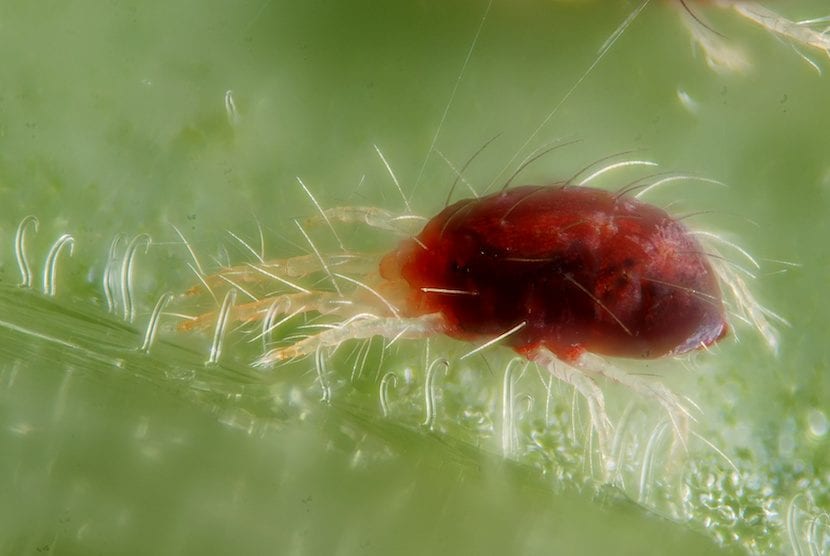
- Red spider: they are mites of less than 0,5 cm that feed on the cells of the leaves. It must be treated with acaricides.
- Mealybugs: they settle on leaves, especially on the greenest ones, and on the stems. They can be removed with a cotton swab soaked in methyl alcohol.
Management
They are susceptible to attack by fungi, such as Phytophthora that attacks the neck or the Helminthosporium that damages the leaves. In any case, it is necessary to treat with fungicides and space the irrigations.
Problems they may have
Sometimes it can happen that no trace of pests or diseases is seen but that, nevertheless, it does not look good. For instance:
- If you have the Yellow sheets it is because he is thirsty.
- If you have the dry leaf tips it is because it is in a dry environment or exposed to drafts.
- If you have the brown lower leaves it is because it is suffering from excess watering.
- If you have the whitish or discolored leaves it probably lacks light (not direct sun).
Rusticity
It will depend on the species, but more or less all endure the same: -2ºC as long as they are in a sheltered area.

C. ernesti-augusti
What do you think of the Chamaedorea palm genus? I hope you enjoyed doing it as much as I did. 🙂